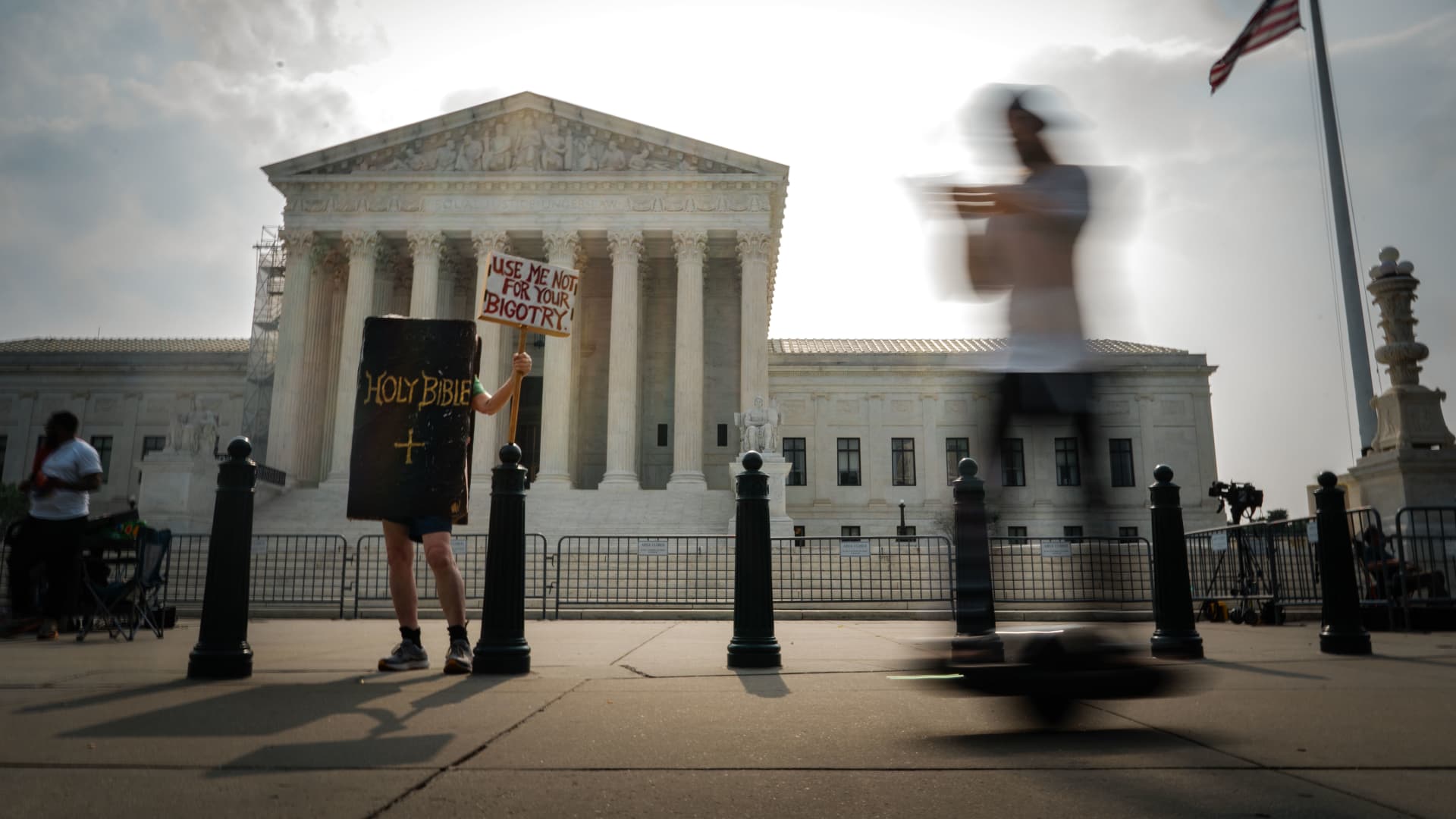Products You May Like
Many student loan borrowers face risk factors that suggest they could struggle covering their bills, especially after the Supreme Court struck down President Biden’s federal student loan forgiveness proposal and repayment will resume in October.
To that point, about 20% of borrowers exhibit one or all of five risk factors, according to a June 7 report from federal watchdog agency the Consumer Financial Protection Bureau.
Those five risk factors include:
- Delinquencies on student loans prior to the onset of the Covid-19 pandemic;
- Pre-pandemic payment assistance on student loans;
- Multiple student loan servicers;
- Delinquencies on other credit products since the start of the pandemic; and
- New non-medical collections during the pandemic.
Colton Stedman, 34, a student-loan borrower from South Saint Paul, Minnesota, demonstrated one such risk factor himself before the pandemic: He went into a financial hardship forbearance for up to two years because he couldn’t afford his payments, which accrued in interest.
More from Personal Finance:
Supreme Court’s decision will have ‘detrimental impact’ on borrowers
What end of Biden forgiveness plan could mean for the U.S. economy
What college affirmative action ruling means for future applicants
“I felt like I was going backwards,” he said.
‘I would say I was disappointed’
The Supreme Court decision against student loan relief did not come as a shock to Stedman, who — as a Pell Grant recipient — would have had his balance statement completely wiped clean had Biden’s plan survived.
“I wasn’t necessarily surprised,” said Stedman, who graduated from college in 2013 with just under $40,000 in student loan debt. “I would say I was disappointed.”
As of today, he owes $19,570 and has been preparing to restart payments after the three-year pause.
The Supreme Court decision will trigger the largest number of borrowers on record ever to enter repayment simultaneously, for any product type, according to a CFPB spokesperson.
Jack Wallace, director of governmental and lender relations at student loan refinance company Yrefy, said “this means is that borrowers will have to make plans to make payments in October, impact their monthly cash flows.”
“They need to make proper decisions to make those payments,” he added.
For his part, Stedman said he’s found his student loan debt to be a “challenge” since graduation.
“It’s been a very large financial burden, as a young person kind of getting started, and I’m looking forward hopefully in the next couple of years to being able to get them totally paid off and put this stuff of my life behind me,” he added.
Student loan debt in the U.S. now totals $1.8 trillion, according to the Board of Governors of the Federal Reserve System, and the cost of higher education will continue to rise. Tuition and fees have more than doubled in 20 years, reaching $10,940 at four-year, in-state public colleges and up to $39,400 in private institutions during the 2022-2023 academic year, according to the College Board.
Borrowers who graduated during the suspension and have never made a repayment can go to the federal student aid website to find out who their servicer is and avoid missing information.
“Go onto the FSA website and make sure you have an account set up, so that you can get timely information about what your monthly payment is going to be and what alternatives are available to lower that statement,” said Wallace at Yrefy.
3 things to consider as loan payments resume
- Look at income repayment plans. “There are opportunities that exist right now for borrowers to go into income-driven repayment programs,” said Wallace. Income repayment plans are the main way to keep borrowers outside of delinquencies and defaults and can bring a monthly payment as low as to zero dollars a month. Immediately contact your servicer and make sure they have your proper information, said Wallace.
- Now is the time for a fresh start. People who were previously delinquent or defaulted on their student debt have the opportunity for a do-over, said Wallace. “That’s a positive thing,” he said. “That’ll give them an opportunity to get back in good graces regarding their credit.” Wallace suggests those who defaulted consider some of the public service forgiveness programs to provide some relief on the monthly payment.
- Public service loan forgiveness program is not limited to government employees. This program eliminates your remaining balance after 10 years of qualifying payments if you’re in a public service or interest job, and it applies beyond government workers — its scope includes teachers, firefighters and other first responders.
